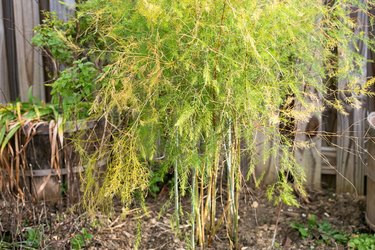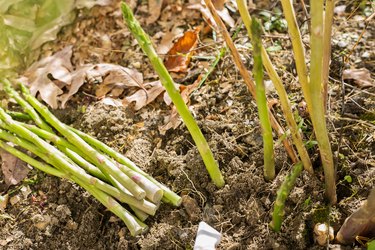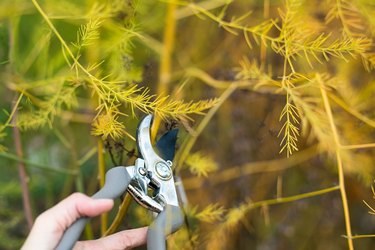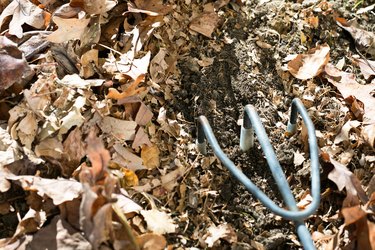Things You'll Need
Pruning shears
Newspapers
Straw

Asparagus is a perfect crop for the home gardener. It is a perennial, which means your asparagus bed will provide you with spring treats for many years to come, with almost no effort. While others are paying premium prices for this gourmet vegetable, you will be harvesting your own every day for six to eight weeks. Blanch and freeze the leftovers and you can enjoy these spears throughout the year.
Step 1

Start planning for winter the previous spring. Harvest your asparagus as usual, but make sure you leave two or three spears growing throughout the harvest season. Those spears will sprout ferns that will help to harvest sunlight, which will extend your asparagus season. This, in turn, will strengthen your bed and make it more resistant to winter cold.
Video of the Day
Step 2

Stop harvesting when your spears get to pencil-thin size. Leave those spears to grow ferns that capture sunlight and feed your bed after your harvest. They will furnish energy to the bed to strengthen your plants for the coming winter.
Step 3

Cut your dried ferns to the ground after the first frost, if you are in an area that doesn't get a lot of snow, and has bare ground for most of the winter. Make sure the plants are brown and dry. This prevents asparagus beetles from moving in and spending the winter. It also tells your asparagus plants that it is time to be dormant, so that they can rest until spring production time. If the ground freezes in your area, protect your bed with layers of newspaper, covered with a thick layer of straw or other airy mulch.
Step 4

Leave the ferns in place if you are in an area that has snow on the ground for most of the winter. Those ferns will collect and hold snow, which will form an insulating blanket over your bed. Supplement this with layers of newspaper over your bed, covered with a thick layer of straw or other airy mulch. Allow snow to build up and stay on the bed. This provides even more protection.
Step 5

Clean up that bed when the warm weather of early spring starts. Add those bedding materials to your compost pile. Make sure you wait until the last hard frost has passed. Now, proceed again from Step 1.
Tip
Make sure you allow two or three spears to grow throughout the season. Leave those ferns in place throughout the spring and fall.
Use as much mulch as possible for the winter, whether paper and straw or ferns and snow.
Warning
Cut ferns back in warmer winter areas. They are a great place for asparagus beetles to hide and multiply while you aren't looking.
Video of the Day